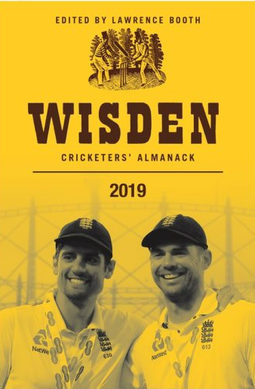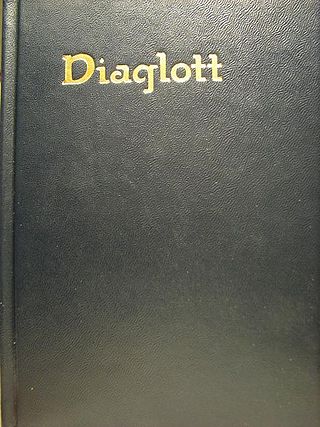
Gerardus Mercator was a Flemish geographer, cosmographer and cartographer. He is most renowned for creating the 1569 world map based on a new projection which represented sailing courses of constant bearing as straight lines—an innovation that is still employed in nautical charts.
Proof most often refers to:

The Great Bible of 1539 was the first authorised edition of the Bible in English, authorised by King Henry VIII of England to be read aloud in the church services of the Church of England. The Great Bible was prepared by Myles Coverdale, working under commission of Thomas Cromwell, Secretary to Henry VIII and Vicar General. In 1538, Cromwell directed the clergy to provide "one book of the Bible of the largest volume in English, and the same set up in some convenient place within the said church that ye have care of, whereas your parishioners may most commodiously resort to the same and read it."

Bibliography, as a discipline, is traditionally the academic study of books as physical, cultural objects; in this sense, it is also known as bibliology. English author and bibliographer John Carter describes bibliography as a word having two senses: one, a list of books for further study or of works consulted by an author ; the other one, applicable for collectors, is "the study of books as physical objects" and "the systematic description of books as objects".
The bibliographical definition of an edition is all copies of a book printed from substantially the same setting of type, including all minor typographical variants.
William Andrew Loomis was an American illustrator, writer, and art instructor. His commercial work was featured prominently in advertising and magazines. However, Loomis is best known as the writer of a series of instructional art books printed throughout the 20th century, and also as the inventor of the "Loomis method". Long after his death, Loomis's realistic style has continued to influence popular artists.

The Germ, thoughts towards nature in art and literature (1850) was a periodical established by the Pre-Raphaelite Brotherhood to disseminate their ideas. The magazine was edited by William Michael Rossetti. The Germ was renamed Art and Poetry, being Thoughts towards Nature, conducted principally by Artists for its last two issues. It was not a success, only surviving for four issues between January and April 1850.

Wisden Cricketers' Almanack, or simply Wisden, colloquially the Bible of Cricket, is a cricket reference book published annually in the United Kingdom. The description "bible of cricket" was first used in the 1930s by Alec Waugh in a review for the London Mercury. In October 2013, an all-time Test World XI was announced to mark the 150th anniversary of Wisden Cricketers' Almanack.

Book design is the art of incorporating the content, style, format, design, and sequence of the various components and elements of a book into a coherent unit. In the words of renowned typographer Jan Tschichold (1902–1974), book design, "though largely forgotten today, [relies upon] methods and rules upon which it is impossible to improve, [and which] have been developed over centuries. To produce perfect books, these rules have to be brought back to life and applied". Richard Hendel describes book design as "an arcane subject", and refers to the need for a context to understand what that means.

The Emphatic Diaglott is a diaglot, or two-language polyglot translation, of the New Testament by Benjamin Wilson, first published in 1864. It is an interlinear translation with the original Greek text and a word-for-word English translation in the left column, and a full English translation in the right column. It is based on the interlinear translation, the renderings of eminent critics, and various readings of the Codex Vaticanus. It includes illustrative and explanatory footnotes, references, and an alphabetical appendix.

Milton's 1645 Poems is a collection, divided into separate English and Latin sections, of John Milton's youthful poetry in a variety of genres, including such notable works as An Ode on the Morning of Christ's Nativity, Comus and Lycidas. Appearing in late 1645 or 1646, the octavo volume, whose full title is Poems of Mr. John Milton both English and Latin, compos'd at several times, was issued by the Royalist publisher Humphrey Moseley. In 1673, a year before his death, Milton issued a revised and expanded edition of the Poems.

American Cookery, by Amelia Simmons, is the first known cookbook written by an American, published in Hartford, Connecticut, in 1796. Until then, the cookbooks printed and used in the Thirteen Colonies were British. Its full title is: American Cookery, or the art of dressing viands, fish, poultry, and vegetables, and the best modes of making pastes, puffs, pies, tarts, puddings, custards, and preserves, and all kinds of cakes, from the imperial plum to plain cake: Adapted to this country, and all grades of life.
Imprint or imprinting may refer to:

A facsimile is a copy or reproduction of an old book, manuscript, map, art print, or other item of historical value that is as true to the original source as possible. It differs from other forms of reproduction by attempting to replicate the source as accurately as possible in scale, color, condition, and other material qualities. For books and manuscripts, this also entails a complete copy of all pages; hence, an incomplete copy is a "partial facsimile". Facsimiles are sometimes used by scholars to research a source that they do not have access to otherwise, and by museums and archives for media preservation and conservation. Many are sold commercially, often accompanied by a volume of commentary. They may be produced in limited editions, typically of 500–2,000 copies, and cost the equivalent of a few thousand United States dollars. The term "fax" is a shortened form of "facsimile" though most faxes are not reproductions of the quality expected in a true facsimile.

Edmund Evans was an English wood-engraver and colour printer during the Victorian era. He specialized in full-colour printing, a technique which, in part because of his work, became popular in the mid-19th century. He employed and collaborated with illustrators such as Walter Crane, Randolph Caldecott, Kate Greenaway and Richard Doyle to produce what are now considered to be classic children's books. Little is known about his life, although he wrote a short autobiography before his death in 1905 in which he described his life as a printer in Victorian London.

The Doctrina Christiana were two early books on the catechism of the Catholic Church, both published 1593 in Manila, Philippines. These are two of the earliest printed books in the Philippines.
Edition Leipzig was a publisher in the German Democratic Republic (GDR/DDR), which, for the most part, placed books on Western markets as an export publisher. This was intended to serve representative purposes as well as to procure foreign currency. Today, the publishing house is part of the Seemann Henschel publishing group, which was taken over by Zweitausendeins in October 2017 with a program on regional and cultural history.

In 1845, the English-born Welsh architect Owen Jones designed an illustrated and decorated version of the 1662 Book of Common Prayer, the official prayer book of the United Church of England and Ireland. It was published in London by John Murray, with two new editions following in 1863.












